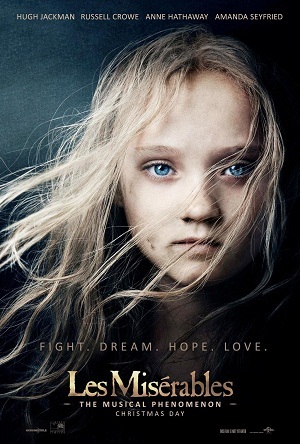“Pilgrimage is always an inward journey…” ~Huston Smith, from his Foreword to The Art of Pilgrimage
When we think of making a literary pilgrimage, two main categories spring to mind. First, we may set out to visit a place connected with a favorite author, that author’s home or the place where she or he created the novels, poems, or plays that now draw us into that writer’s mental and emotional orbit. Going to Shakespeare’s Stratford, Mark Twain’s home in Hannibal, Missouri, Margaret Mitchell’s home in Atlanta, or the Brontës’ Haworth Parsonage in Yorkshire, England, would be examples of this type of pilgrimage.
Second, literary works can inspire readers to visit a place associated with events within the fictional world. Sherlockians wishing to pay a call at 221b Baker Street, London, can visit the Sherlock Holmes Museum, now bearing that address. Visitors to Verona who are fans of Shakespeare’s Romeo and Juliet can be directed to Casa di Giulietta (Juliet’s House) on the Via Capello and even plan a wedding there featuring a kiss on Juliet’s balcony. (The film Letters to Juliet envisioned just such a pilgrimage.) Jane Austen’s devoted readers who might wish to visit Bath, London, or other English locations with a view to discovering more about the settings in her novels will find a ready tour guide in Julie Wakefield, whose austenonly website provides abundant detail on locations in the novels and in their film and television adaptations (as well as key places in the author’s life)–enough for a lifetime of Austenian pilgrimage.
When the settings of the fictional world are themselves fictional, making a pilgrimage becomes a little more difficult, but surely not impossible. Walt Disney made it easy to visit Cinderella’s castle, and trips to Baum’s Oz or Tolkien’s Middle-earth are available online for virtual visitors. After reading Goddessinsepia’s essay on the Diogenes Club, I feel a little closer to having visited this favorite fictional haunt of Sherlock Holmes’ brother, Mycroft. The grave of Jean Valjean presents an interesting case: I can visit the famous cemetery of Père Lachaise in Paris, but I must merely imagine the unmarked burial plot of Victor Hugo’s most affecting character.
I would like to suggest a third category in which the literary work itself is the place of pilgrimage, both the destination and the road to get there, and the act of reading is the pilgrim’s journey. Certainly, within this category I would have to include the physical literary object itself–often a manuscript or first edition–which can generate much interest on its own and draw visitors who simply want to view it. Recently, the last four chapters of the manuscript for Gone With the Wind came to light in a library in Connecticut, discovered by Ellen F. Brown (watch her CBS interview), author of Margaret Mitchell’s Gone With the Wind: A Bestseller’s Odyssey from Atlanta to Hollywood. The manuscript has “come home” to Atlanta, where visitors to the Atlanta History Center can view Mitchell’s handwritten changes to the typescript. Both everyday readers and specialists may get a deeper understanding of the novel from such an artefact.
Yet it is the inward journey to the literary work that I want to focus on now. Whenever we pick up a book or story or poem (or watch a play unfold), we may find, often unexpectedly, that it has taken hold of us at a deep level. It seems to be asking us a question, perhaps one of sacred importance, and inviting us to follow through to find the answer. That is when reading (or, in some case, viewing) becomes a sort of pilgrimage. How does this play out, and how can we get the most from our pilgrim quest to a literary work?
For this, I want to consult a wonderful guidebook, The Art of Pilgrimage: The Seeker’s Guide to Making Travel Sacred by Phil Cousineau.
Cousineau organizes his reflections on the soul-nourishing art of pilgrimage according to seven stages of the hero’s journey, made famous in the writings of Joseph Campbell (e.g., The Hero with a Thousand Faces). Let me highlight Cousineau’s stages of pilgrimage as if we are visiting (reading!) a novel. I will take as my example a case in which reading became a pilgrimage for me.
I. The Longing–I do not recall when I first heard of the book Les Misérables, but I do recall learning, probably from my mother, of its opening premise: that a poor man, Jean Valjean, who stole bread for his family, suffered long imprisonment. The simple injustice set up a longing and a curiosity to learn more. Many years followed before…
II. The Call–On a long car trip west, I had packed an audio cassette of the Mercury Theatre radio play of Les Misérables, with the sonorous voice of Orson Welles bringing Jean Valjean to life as I drove across the endless plains of Nebraska. After experiencing this play, I knew I had to read the book. (For many people, the Call for this book might have come differently, perhaps through seeing the Boublil-Schönberg musical of “Les Mis” on stage or in a PBS broadcast concert.)
III. Departure–While preparing to write The Fictional 100, I began a thorough reading of Hugo’s hefty masterpiece in earnest. I chose the Signet Classic paperback.
IV. The Pilgrim’s Way— Les Misérables affords the reader setting off on this long journey some almost magically moving scenes, starting with an account of Jean Valjean’s imprisonment, four escapes, and reimprisonments, showing what kind of changed and hardened man emerged from 19 years chained in the galleys; knowing this about him makes his life-changing encounter with the saintly Bishop Myriel all the more amazing. My first tears came. Moving toward the deep heart of this long novel, some guiding words from Phil Cousineau about the Pilgrim’s Way seem very appropriate:
“Remember, those who don’t ask essential questions don’t find what’s most authentic. The soul of your pilgrimage, the heart of your destination, disappears, will be invisible, like the Grail Castle if you are too afraid or too proud to appear as you really are at the moment–someone far, far from home, without all the answers, without the soul map to the city. Those who refuse to ask vital questions along the way pay the consequence, either by getting lost or by settling for the superficial…” (p.120)
V. The Labyrinth–In The Inferno, Dante starts his pilgrimage in the labyrinthine “dark wood” in the middle of life, but for most books, most readers will be surprised to discover themselves in the labyrinth, looking around, trying to find their way forward, or the way back. Les Misérables was indeed a place far, far from home and I didn’t have the whole map. The political and social upheaval in which the novel is set was as complex as the network of Paris sewers, and while Hugo proved to be an excellent guide, providing fascinating historical background, it was also wise to consult other sources and opinions on these and other matters concerning the novel. At the psychological level, one essential question became understanding my contradictory feelings about Javert. Javert is so well-drawn, and we are given so much access to his thoughts, I found myself sympathizing with him at many points, especially as he careened toward tragedy. But I also knew that his rule-bound outlook and reliance on moral absolutes caused much suffering. Was my sympathy for him by the author’s design or a product of my own inclination to “play by the rules”? I had to pay attention to questions such as this, if I wished to deepen my journey.
VI. Arrival–Emerging from the Labyrinth and arriving at the end of this book meant arriving at the end of Valjean’s life, and attending at his bedside. The exhilaration of Arrival was tempered by the sense of loss.
VII. Bringing Back the Boon–I wouldn’t call finishing Les Misérables heroic, but I did finish, so what did I learn? What boon did I bring back? Phil Cousineau writes: “The story that we bring back from our journeys is the boon.” I brought back my lived experience with this novel–I remember when I cried, when I forgot I was reading rather than living the story, when I was confused and had to go back a few chapters. I brought back my long acquaintance with Jean Valjean. I brought back a spiritually uplifting story of redemption and forgiveness. Was this biography of a soul too ideal? Mario Vargas Llosa speaks in its favor, explaining that the book offers The Temptation of the Impossible. I returned from this pilgrimage wanting to turn such impossibility into a living truth.
The occasion for making a pilgrimage to a literary work can be a first reading or a rereading. LifetimeReader has set herself a very ambitious plan of first readings of classics that she has never read or didn’t have time before to engage with fully. She experienced the Call to undertake “A Personal Odyssey” and on January 1, 2011, she launched her Departure with a review of Why Read the Classics? by Italo Calvino, in which she writes:
“A classic, as Calvino says, can come “to represent the whole universe, a book on a par with ancient talismans” and “you cannot remain indifferent.” Books such as the ones I have put on my list have the potential to be life altering–and at the same time, foster connection between me and the generations on both sides.” ~LifetimeReader
It is wonderful to read what she is discovering along her Pilgrim’s Way, with its many points of Arrival and its Boons of storytelling brought back.
Anniversaries mark opportunities to make a pilgrimage as a return trip to a favorite literary work. June 2011 is the 75th Anniversary of the publication of Gone With the Wind, and fans are observing it with all the types of literary pilgrimage we have described. In the Preface to the 75th Anniversary Edition, novelist Pat Conroy reports that his mother reread the novel straight through every year; clearly, she didn’t need any special anniversary to revisit her favorite book.
Jane Austen’s fans also have a special gift for pilgrimage, and The Sense and Sensibility Bicentenary Challenge 2011, announced by Laurel Ann Nattress of Austenprose, is a fine example. I haven’t taken up the challenge myself, but I loved Jane Greensmith’s account of her Umpteenth Reading of Sense and Sensibility. She hones in on a little-noticed passage with very much to say about how readers judge (and misjudge) characters and, likewise, how people judge (and misjudge) people in real life. A boon indeed.
Related posts:
Tags: Book Reviews, Gone With the Wind, Hero's Journey, Huston Smith, Jean Valjean, Les Misérables, Margaret Mitchell, Phil Cousineau, Pilgrimage, Quest literature, Scarlett O'Hara, Sherlock Holmes, The Art of Pilgrimage




















Recent Comments